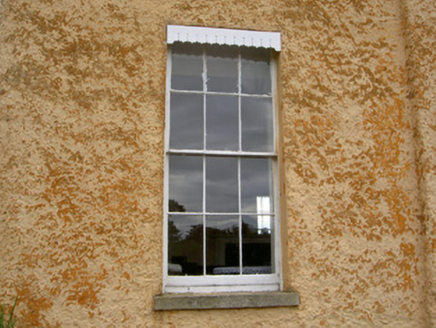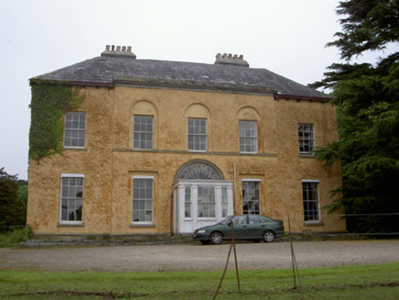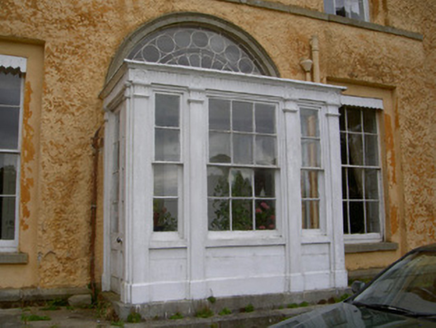Survey Data
Reg No
13900424
Rating
Regional
Categories of Special Interest
Architectural, Artistic, Historical, Social
Previous Name
Anaverna
Original Use
Country house
In Use As
Country house
Date
1780 - 1800
Coordinates
308842, 313381
Date Recorded
02/08/2005
Date Updated
--/--/--
Description
Detached five-bay two-storey with attic house, built c. 1790. Returns and extensions to north c. 1840, three-bay breakfront and timber porch to south elevation. Hipped slate roof, clay ridge tiles, slated chimneystacks, chamfered stone capping, projecting eaves, moulded cast-iron gutters on corbelled eaves, circular cast-iron downpipes. Painted roughcast rendered walling, stone plinth course, continuous stone sill course to first floor windows of breakfront, carved stone coping to parapet of breakfront. Square-headed window openings, granite sills, painted timber six-over-six sliding sash windows; painted timber fretted canopy to ground floor windows, south elevation; recessed painted smooth rendered surround to ground floor windows of breakfront, recessed round-headed surround to first floor windows of breakfront; three-over-three sliding sash windows to attic, north elevation, tripartite sliding sash window to east elevation, round-headed stairwell window opening to north elevation. Flat-roofed painted timber entrance porch surmounted by decorative glazed fanlight, carved stone surround; porch comprising Wyatt window to south, pilasters supporting fluted frieze, rosette panels and cornice, painted timber and glazed double doors to west; stone surround to internal painted timber door with four panels; round-headed door opening to west, painted timber and glazed double doors surmounted by stained glass fanlight; square-headed door opening to north extension, painted timber door with glazed panels. House set in own extensive grounds, random rubble boundary wall to west, ashlar stone piers and wrought-iron gates giving access to site.
Appraisal
Anaverna House is a substantial Georgian house that was designed by Thaddeus Gallagher, a local builder and farmer. Thaddeus' son James, an architect, moved to New Orleans, changed his name to Gallier and became one of the best known and respected architects of the time, designing many landmark public buildings of the city, including St. Patrick's Church. Anaverna House retains the majority of its original fabric and features, and is of great architectural merit.





